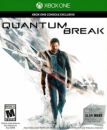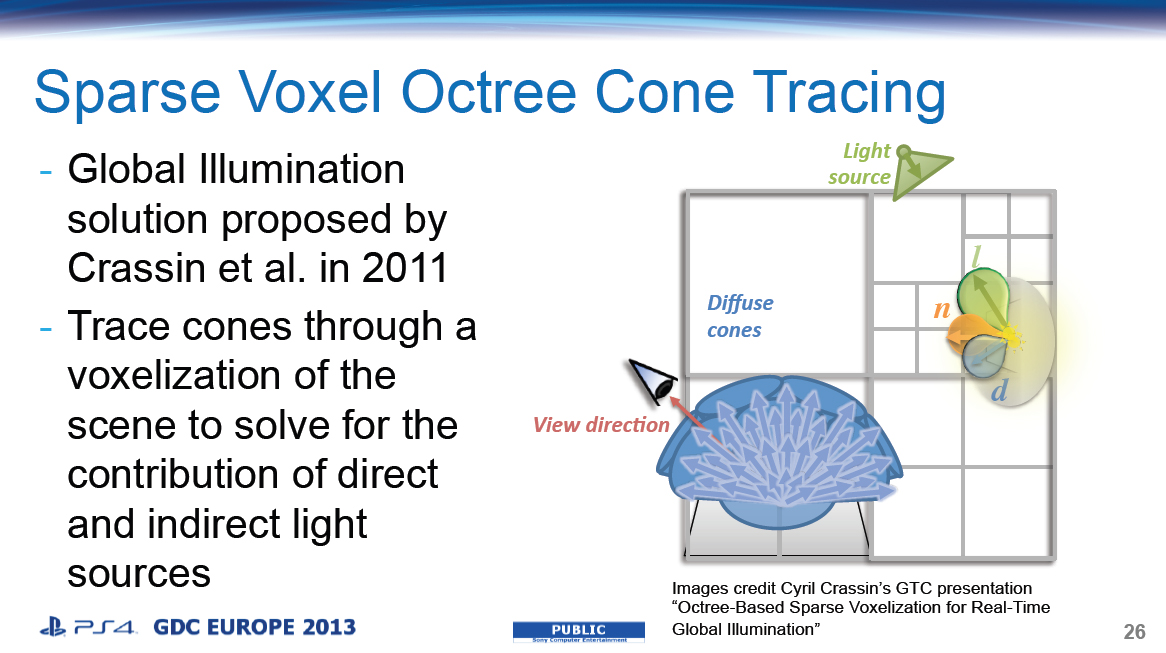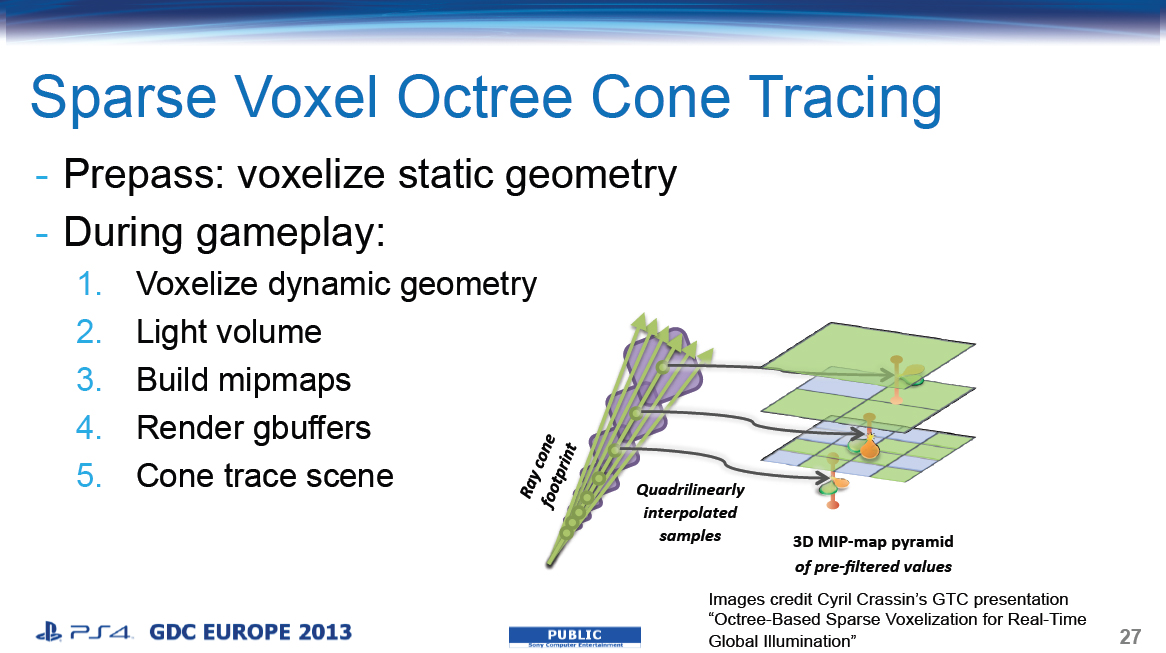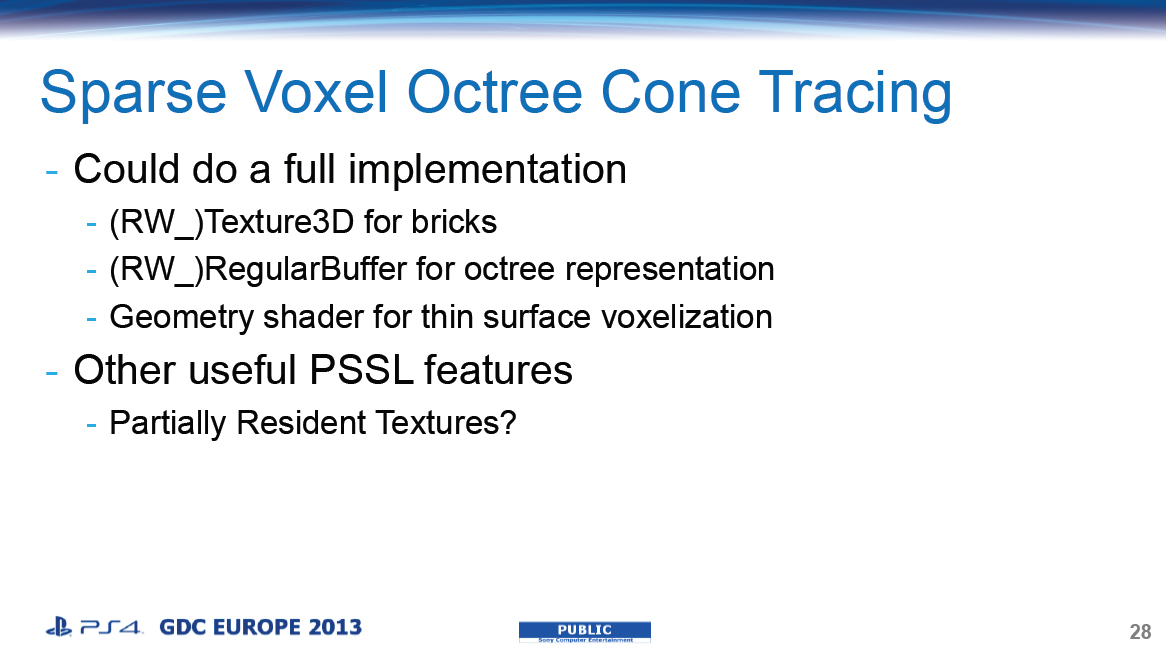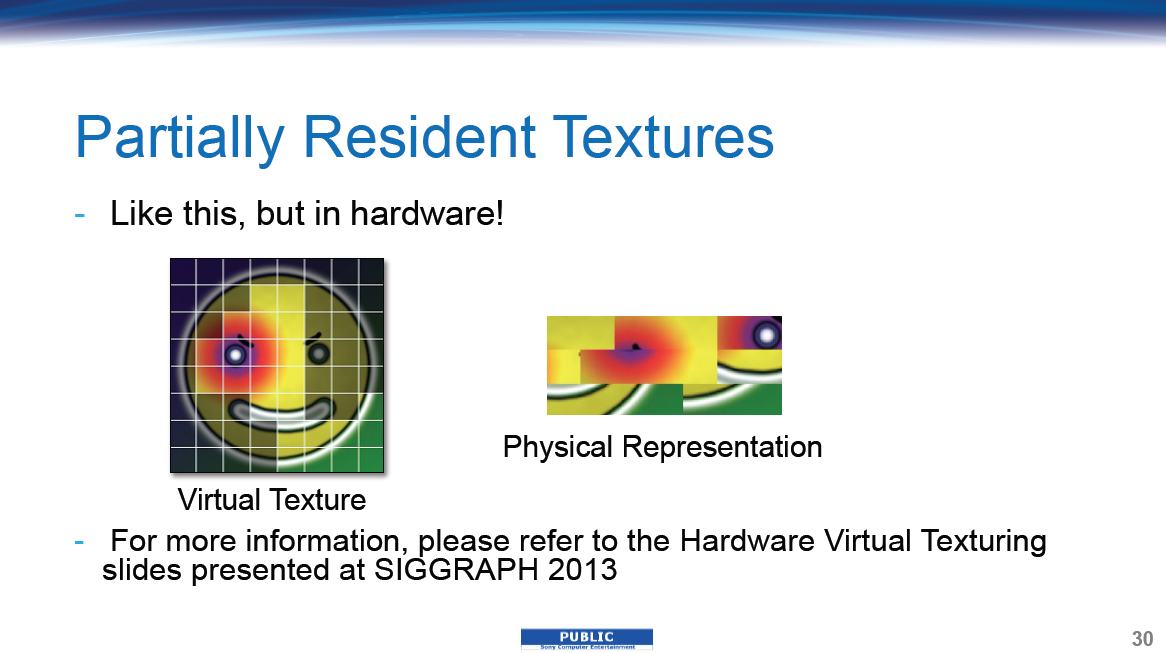Ray Tracing the holy grail. No way possible on next gen machines. But Voxel Ray Tracing is natively built into Xbox One hardware in its Move Engine Co Processors.
The software DX 11.2 wasnt implemented fully until June this year for Xbox One. UE4 was not able to take advantage of this software upgrade for Xbox One. Theres no reason why it cant be added in the future.
It was a big hit at Siggraph and Unreal Engine 4 was initially based on it. Turns out they eventually had to strip it out(quietly) due to them not being able to get it up to speed on next generation consoles and mid-range PC's. However, There's also a plugin for Unity and it runs quite well. The data was being stored in a Sparse Voxel Octree. A 3D, layered, voxel grid. Traversing this grid is very slow.
To get round this original UE4 method????
Instead of using voxels to store the data, they're using a 3D texture. Like a cube, or a voxel, but stored as an array of 2D textures. Now it was fast, but this had some problems of its own.
The 3D textures were big and required a lot of memory. To fix this partial resident textures are being used. Partial Resident textures are where it chops up an enormous texture into tiny little tiles, and streams only what is needed, saving both RAM and bandwidth.
So powerful you can store textures as big as 3GB in 16MB of RAM(or eSRAM?).
DirectX 11.2 and the X1 chip architecture is built for doing partial resident resources in hardware. Removes the limitations other software implementations had, which held some engines back, such as John Carmack's Rage.
The X1's architecture and data move engines have tile and untile features natively, in hardware.
Both AMD GPUs in PS4 and Xbox One support partial resident textures, but we know for a fact Microsoft added additional dedicated hardware in the X1 architecture to focus on this area beyond AMD's standard implementations. Where Sony did not.
MS talked about partial resident resources in their DirectX build conference. They explained the move to partial resident resources as a solution. It just might end up being even more important than originally believed. And more recently an unnamed third party developer is touting better ray tracing capabilities on the X1:
http://www.edge-online.com/news/pow...erences-between-ps4-and-xbox-one-performance/
DirectX11.2 was only recently unveiled earlier this year. No launch games would have been designed for this. Partial resident textures are still a fairly new technique, and just now getting supported in hardware. Voxel cone ray tracing is also a fairly new implementation. And the alternative of using 3D texture along with partially resident textures is even newer, and not many have attempted it. Developers will certainly need time to start messing around with both.
Question is when will we see at leat first and second party Xbox devs utilize this? Its a big thing for consoles and will really change how games are designed nd coded. Polygons will be a thing of yesterday.
I wonder if Quantum Break, Halo 5 and Black Tusks game will utilize the shift. It would change visuals drastically.









